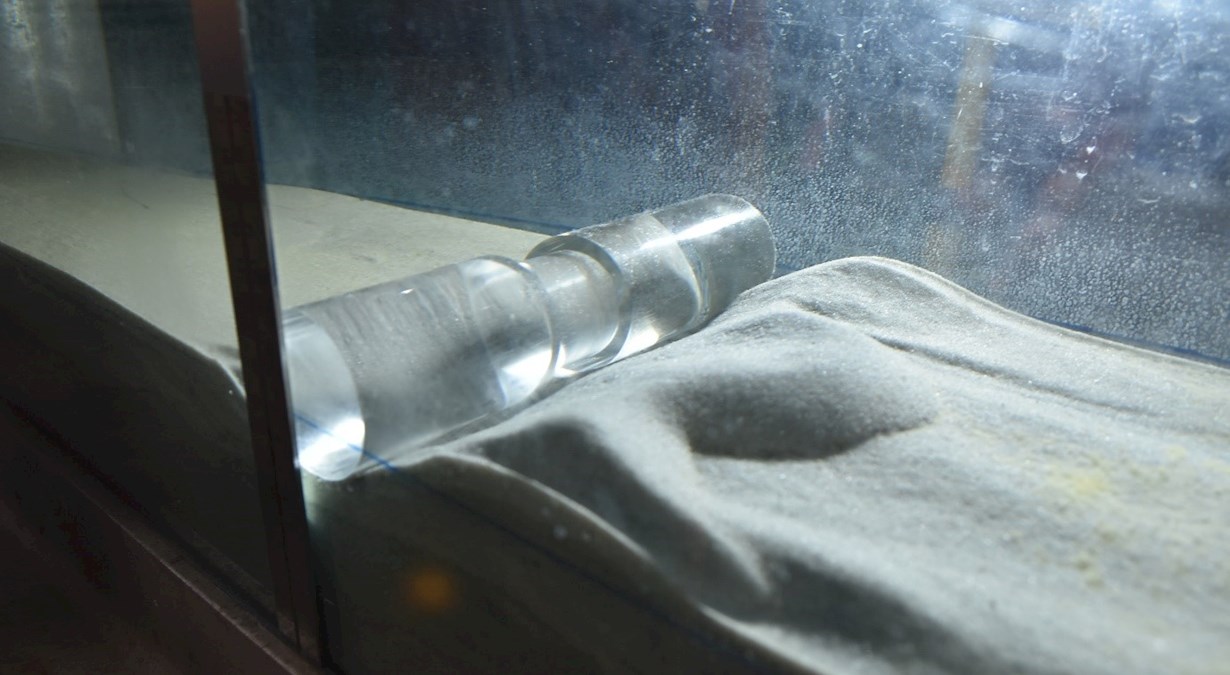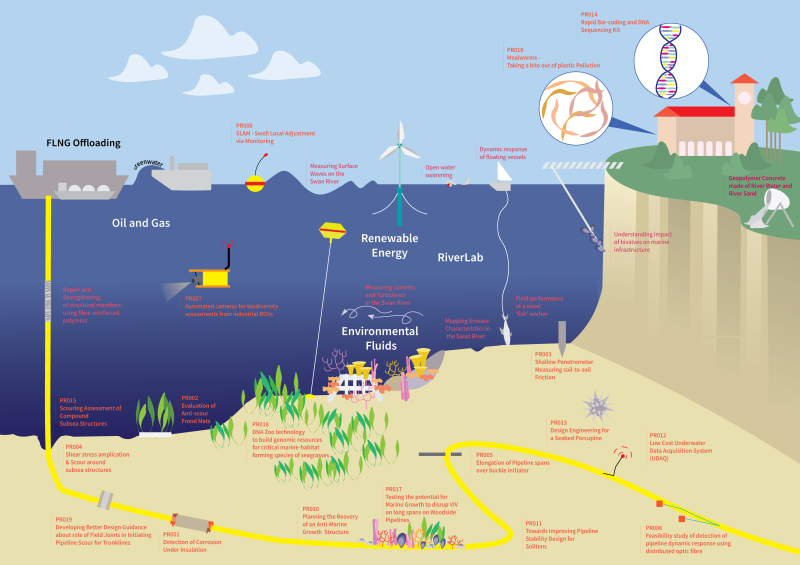PROJECT
OceanWorks Prototype Projects
The OceanWorks Prototyping fund was established to encourage innovation and enable rapid research into potential offshore engineering solutions.
Successful applicants are encouraged to work with industry during the project and communicate their findings to industry and beyond.
Featured Projects
Active Prototype Projects
- Shear stress amplification and scour around subsea structures
-
Shear stress amplification and scour around subsea structures
Project Status: Active
Investigators
- Scott Draper
Associate Professor, UWA
- Joe Tom
Assistant Professor, University of Illinois, USA
Project Description
Offshore and coastal infrastructure are susceptible to local scour, where sediment is removed from the area adjacent to the structures due to waves and currents (Figure 1). This phenomenon can endanger the stability of seabed structures, such as offshore energy infrastructure or artificial reefs at beaches. Scour remediation and protection is costly and improved design of scour protection could increase infrastructure safety and reduce costs to industry and society.
In this project, we are undertaking a series of physical model experiments in the laboratory at UWA (Figure 2) to develop a new method to predict the enhancement of water flow around different types of subsea structures and the potential for scour. The results of this project will lead to new techniques to design structures against scour and improved methodologies for the offshore and coastal engineering industries.
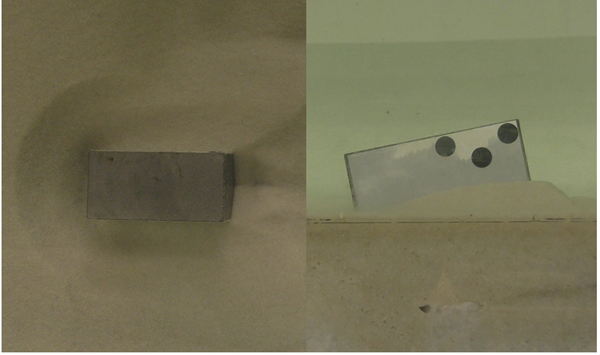
Figure 1. Sediment removal around model structures leading to settlement
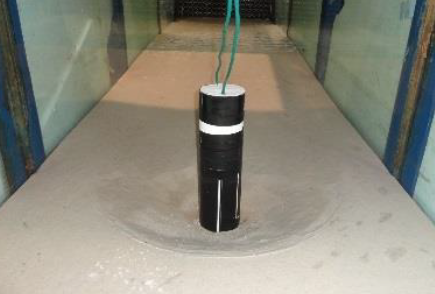
Figure 2. Scour experiments conducted at UWA flume facility (courtesy Weidong Yao)
- Scott Draper
- Testing waters with DNA zoo technology to build genomic resources for marine habitat-forming species of seagrasses
-
Testing waters with DNA zoo technology to build genomic resources for critical marine habitat-forming species of seagrasses
Project Status: In progress
Investigators
-
Matthew Fraser
Research Fellow, Oceans Institute and School of biological Sciences, UWA
-
Belinda Martin
PhD Candidate, Oceans Institute and School of Biological Sciences, UWA -
Parwinder Kaur
Director, DNA Zoo Australia, UWA School of Agriculture and Environment, UWA
Project Description
Marine ecosystems are being fundamentally altered by climate change, especially in circumstances where habitat-forming species are negatively impacted. Understanding the responses of habitat-forming species to changing climate has therefore become a major conservation requirement in the Anthropocene. One major factor determining the response of organisms to stressors like increasing temperature is their genetic potential to acclimate and adapt. However, predictions of such “genetic resilience” depend on the availability of high-quality genome sequences, which has previously been cost-prohibitive, limiting the number of marine organisms with high quality genomes that have been published. Recent advances in sequencing technologies and bioinformatic analysis have reduced the cost of producing such genomes, opening up this exciting new resource for use in marine ecosystems. We propose to apply the novel approach of DNA Zoo to build high-quality, chromosome-length genomes for habitat-forming WA seagrasses.
This project will involve collaboration between the Oceans Institute, DNA Zoo and the Department of Biodiversity Conservation and Attractions (DBCA), and when complete will deliver the most comprehensive seagrass genome available globally. This will position IOMRC to build in-house capacity to develop world-class genomic resources for ocean organisms with a workflow that would be broadly applicable to a wide range of marine species, including iconic megafauna and economically valuable fisheries species. The availability of these sequences will provide a valuable resource for additional research in areas such as population genetics, environmental DNA (eDNA) analysis and genomics – all emerging components of marine ecosystem management.
-
- Scouring assessment of compound subsea structures
-
Scouring assessment of compound subsea structures: Field Observation vs. State of the art practice
Project Status: Completed
Investigators
- Scott Draper
Associate Professor, UWA
Project Description
Scouring assessments for subsea structures are usually conducted using methodologies and assumptions established for surface piercing structures (e.g. bridge piers). Most of these methods are also based on small scale laboratory experiments which model idealised flow conditions and seabed sediments. The application of these methods to subsea structures in the field therefore leads to some inevitable uncertainties. This existing gap in practice is exacerbated by a lack of reliable field data to benchmark the respective methodologies and assumptions.
This projects aims to execute a ‘seed’ project whereby high quality field observations of scour around a subsea structure will be back-analysed to demonstrate that with the right technology / approach, we can effectively predict scour and therefore address scour related challenges. The technology and approach utilised in this case will be carefully constructed model scale experiments which aim to mimic field conditions, and account for actual structural geometry (using 3D printing) and site specific sediment and metocean conditions.
Outcome: Results from this project have been presented at two conferences (Australian Oil and Gas 2019 and the First Vietnam Symposium of Advances in Offshore Structures 2018) and a journal publication is in preparation. The results have also led to discussions concerning a wider industry research project, which would have an ultimate aim of developing improved design guidelines for scour assessment of subsea structures.
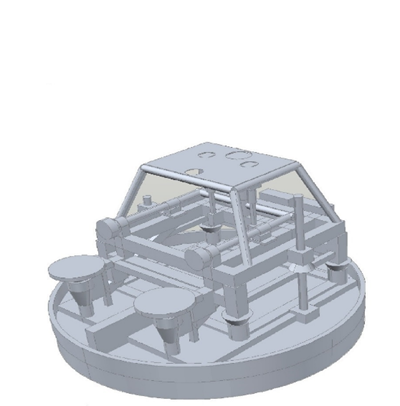
Figure 1. 3D model of subsea structure analysed.
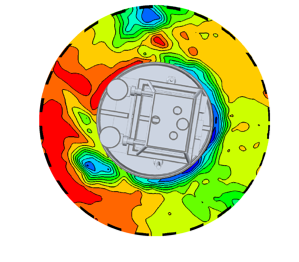
Figure 2. Scour pattern (observed in model scale experiments) around the subsea structure.
- Scott Draper
- Low-cost Underwater Data Acquisition System
-
Low-cost Underwater Data Acquisition System
Project Status: In progress
Investigators
- Henning Mohr
Research Fellow, Oceans Graduate School, UWA - Guido Wager
Electronics Engineer, National Geotechnical Centrifuge Facility
Scope
Any offshore development requires the collection of subsea measurements enabling the live-streaming of in-situ research data. Typically the measurements are collected and processed in an underwater data acquisition system (U-DAQ) that enable the transmission of the data to shore. Data acquisition system used in industry are extremely expensive and affect significantly the budget of any research project leading to the need more cost effective methods to record measurements in the offshore environment.
This project comprises the design development, implementation and testing of a low-cost underwater data acquisition system that is able to live-stream data recorded during offshore projects. The developed U-DAQ is capable of collecting measurements from multiple sensors such as load-cells, pressure sensors, IMUs etc. and send it via an umbilical to shore and then via wireless technology to the cloud. The proposed system is a necessity for any project that requires underwater data collection. In contrast to already commercially available systems, the proposed innovative U-DAQ is designed for high cost effectiveness without compromising or neglecting the system reliability, precision, accuracy and reproducibility of data.
The current U-DAQ system (shown below) is currently used in UWA projects such as RiverLab or the Wave Energy Research Centre to log and store subsea measurements.
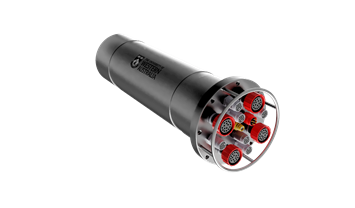 Figure 1. CAD model of the Underwater Data Acquisition System (U-DAQ)
Figure 1. CAD model of the Underwater Data Acquisition System (U-DAQ) - Henning Mohr
- Towards Improving Pipeline Stability Design accounting for Non-Linear Internal Waves
-
Towards Improving Pipeline Stability Design accounting for Non-Linear Internal Waves
Project Status: Complete
Investigators
-
Scott Draper
Associate Professor, Oceans Graduate School, UWA
-
Greg Ivey
Professor, Oceans Graduate School, UWA
-
Associate Professor, Oceans Graduate School, UWA
-
Liang Cheng
Professor, Civil, Environmental and Mining Engineering, UWA
Scope
Non-linear Internal Wave (NLIW) induced currents are prevalent at numerous locations offshore the North West Shelf and elsewhere around the world. Routing pipelines through areas of significant NLIW activity requires careful design to ensure the pipeline remains stable when subjected to large near-bed currents. The aim of this project has been to review (1) existing design practice concerning pipeline stability design in locations where NLIW are significant, and (2) recent research findings on NLIW and pipeline stability assessment which may be used to improve upon this existing practice.
Outcome
Based on the review, a list of recommendations have been made and shared with Woodside. A unique meeting was also hosted by UWA and Woodside to share the recommendations with representatives from four of the main pipeline engineering consultancies. This has led to refinement of the recommendations, and has motivated further work.
-
- Planning the recovery of an anti-marine growth structure
-
Planning the recovery of an anti-marine growth structure
Project Status: In-Progress
Investigators
- Marie-Lise Schlappy
Research Associate, Oceans Graduate School
Project Description
Oil and gas subsea equipment is often impacted by marine growth and leads to failure that are costly to the industry. To investigate how different types of equipment react to exposure to seawater in deep waters, Woodside deployed an “Anti-Marine Growth Structure” (AMGS) in one of their fields. The company is now wanting to retrieve the structure and learn about the types of deposits and whether they are due to marine animals or abiotic processes.
In this prototype UWA staff proposes to make a plan of how best to recover the structure and what type of science could be carried out on the AMGS to find out about how to avoid equipment failure in the future
- Marie-Lise Schlappy
- Swell-local adjustment via monitoring (SLAM)
-
Swell-local adjustment via monitoring
Project Status:Complete
Investigators
- Jeff Hansen
Senior Lecturer, School of Earth Sciences
- Phil Watson
Professor, Centre for Offshore Foundation System
Project Description
Numerical wave models provide detailed information about wave conditions up to seven days in advance, and are critical to a number of industry applications – both for marine safety, and to inform the best time for complex offshore operations. However, virtually all operational wave models rely on phase-averaged wave models – meaning that rather than modelling the evolution of individual waves, the average properties of the sea state is modelled in frequency and directional space. As a result, and by virtue of being reliant on atmospheric models for wind input, spectral wave models often have difficulty predicting the magnitude and arrival time of wave events, particularly for swell events. For this OceanWorks prototyping project, we are applying machine learning (ML) techniques to test how effective these methods may be in adjusting Bureau of Meteorology (BOM) wave forecasts. A ML algorithm was trained using 18 months of concurrent BOM forecast and wave observations at three wave buoys along the coast of Western Australia. Preliminary results indicate that ML methods can reduce forecast errors by 20% for significant wave height and 40% for peak period (resulting in corrections to swell arrival time).
The project has also funded the deployment of a Sofar Ocean Technologies Spotter wave buoy in 350 m of water offshore of Rottnest Island. The data collected by the buoy (available in real time at www.wawaves.org) will be used, along with data from other concurrently operating wave buoys and traditional and ML techniques, to explore both offshore-to-nearshore wave transformation models and the value of establishing an “early warning” system for predicting swell events on the North West Shelf (based on Southern Ocean swell observations).
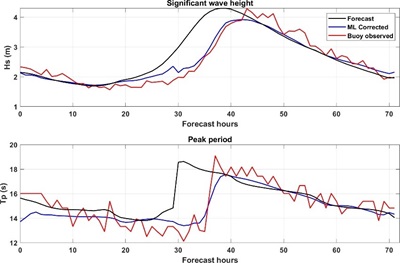
Figure 1. Example of 72-hour BOM forecast (black), machine learning corrected forecast (blue), and buoy observations (red).
- Jeff Hansen
- Detection of pipeline dynamic response distributed optic fibre strain rate sensor and accelerometers
-
A feasibility study on the detection of pipeline dynamic response using distributed optic fiber strain rate sensor and discretely located accelerometers
Project Status: Complete
Investigators
- Jie Pan
Professor, Mechanical Engineering
Project Description
Intrinsically safe sensing of structural response is one of the important challenges for condition monitoring of long-distance oil and gas pipelines. The distributed acoustic sensing (DAS) using coherent Rayleigh backscattering in an optical fibre offers an attractive technique to meet this challenge. In this project, DAS technique is applied to measure the distributed vibration of a laboratory pipeline, which can be subject to the excitation of unsteady flow, operating pump and motor, and impact hammer. The results by DAS are compared with that sensed by accelerometers. The focus of this comparison study is to understanding of the sensitivity of the DAS to spatial variations in the pipeline vibration, relevance of DAS results to the radial response determined by accelerometers, effect of attachment condition on DAS, and accuracy in determining the location of an impact force by DAS.
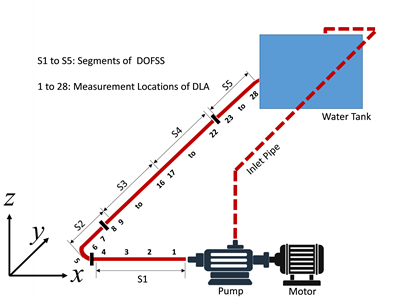
Figure 1. Diagram of the ACC and DAS locations for the experiment
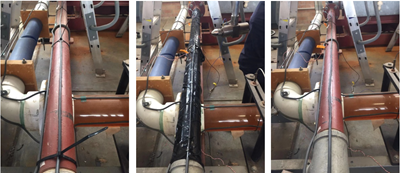
Figure 2. Illustration of three methods of attaching optical fibre cables to the pipe; (left) cable ties, (mid) plastic wrapper, (right) superglue.
- Jie Pan
- Elongation Pipelines spans over buckle initiators
-
Elongation of pipeline spans over buckle initiators
Project Status: Completed
Investigators
-
Hongwei An
Senior Lecturer, Civil, Environmental and Mining Engineering, UWA -
Fraser Bransby
Fugro Chair in Geotechnics, Centre for Offshore Foundation System, UWA
Project Description
In this project, the aim is to improve the understanding about the evolution of free spans related to pipeline sitting over buckling initiators. A 12m long model pipeline (solid PVC rod) with 40mm diameter was used to simulate a pipeline. Below I attached two pictures about the model setup in the current flume.
Due to the limit of the width of the flume (40cm), the model pipe was set along the flow direction. The submerged weight is 17.3N/m and EI is 0.35 km/m^2. An initial span of 3m was formed in the setup. After running a flow of 0.35m/s for 2 hours, there was no significant change to the span length, except for some change induced by sand ripples. This confirms that flow with shallow attack angle does not cause propagation of the touch down point of the free span.
After the flow test, a manual excavation test was carried out to examine how the free span changes. A trench of 1 diameter depth was dug along the pipeline from the touchdown point. With the increase of the length of the trench to 1.8m (from the original touchdown point), a new touchdown point was formed with free span length of 3.3m. A beam bending model was used to calculate this process and modelled results are in good agreement with the observation in the excavation test. The above results have been presented by Prof. Fraser Bransby in Australian Oil and Gas Conference (March 2019).
To simulate the local scour process near the touchdown area, a further test using the Large O-tube facility has been planned. The scour process and the evolution of the free span will be examined. Another report will be followed after the tests in the Large O-tube.
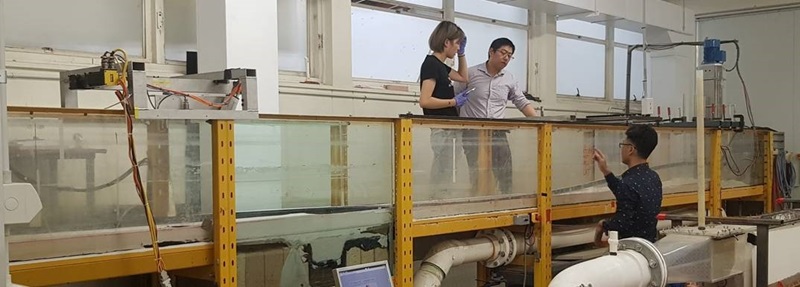
Figure 1. The test setup for modelling free-spanning pipeline over a buckle initiator on sandy seabed
-
- Shallow Penetrometer - Measuring in-situ soil to soil friction
-
Shallow Penetrometer – Measuring in-situ soil to soil friction
Project Status: In progress
Investigators
- Henning Mohr
Research Fellow, Oceans Graduate School, UWA - Sam Stanier
Senior Lecturer, Geotechnical and Environmental Research Group, Cambridge University
Project Description
The shallow penetrometer is a creative extension of conventional cone, T-bar and ball penetrometer, but with added actuation, control capabilities and new type of sensors providing more detailed measurements of soil response. A new ring-shaped penetrometer tool is proposed that generates soil to soil shearing using milled slots (with drainage holes) across a ring interface. During a test, this device is penetrated to a predefined depth filling the slots with soil and is then subjected to one or more stages of rotation under maintained vertical load generating a soil to soil failure plane. The vertical force and torque on the penetrometer are monitored continuously, as are the pore pressures at multiple locations on the surface. The soil-soil resistance is derived from the measurements, in terms of both total and effective normal stresses. Dissipation stages allow the consolidation coefficient to be determined for fine-grained soils, while the timing of rotation stages may be varied to deduce both drained and undrained soil to soil strengths.
The proposed tool would not only enhance the design practice for measuring soil to soil friction, its application could also be a game-changer for any geotechnical development by more precise forecasting of the geotechnical behaviour, offshore or onshore. It may supersede conventional laboratory testing (such as Direct Shear Box testing) which generally suffers from system friction and sample disturbance and, therefore, leads to uncertainties in the measured soil properties. The novel shallow penetrometer tool overcomes both of these issues and, therefore, may lead to a new industry standard of characterising soil properties and would allow to address research questions such as frictional stress dependency at low stresses.
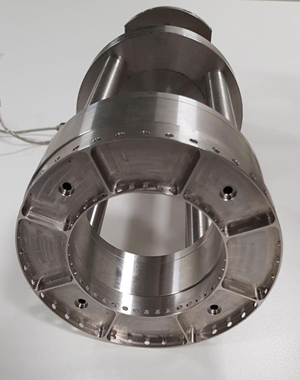
Figure 1. Interface of a shallow penetrometer
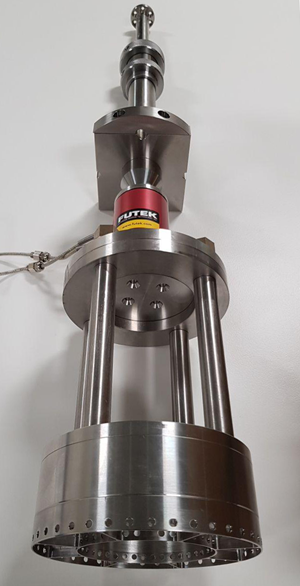
Figure 2. Shallow penetrometer system
- Henning Mohr
- Performance evaluation of anti-scour frond mats
-
Performance evaluation of anti-scour frond mats
Project Status: Completed
Investigators
- Maryam Abdolahpour
Postdoctoral Research Fellow, Oceans Graduate School, UWA
Project Description
Pipelines and subsea structures can cause significant and rapid sediment scour when deployed on mobile seabeds. This results in the need for frequent and costly inspections to assess reliability and serviceability. Typical scour mitigation solutions include dumping of gravel, rocks, sandbags and gabions in the scour holes and eroded areas around pipelines; however, by creating sharp gradients in near-bed sediment transport, these approaches can also cause additional scour around their edges which ultimately impacts negatively on the longevity and effectiveness of these approaches.
This research aims to investigate the performance and efficiency of artificial seagrass mattresses (ASMs) for scour protection around subsea structures. These natural-based structures have the potential to both trap sediment and reduce bed shear stress, thereby presenting a permanent solution for seabed stabilization. Our preliminary results revealed the significant impact of seagrass shoot density and flexibility on the rate of sediment capture. The ultimate goal of this project is to develop design guidelines and implement performance prediction for the use of ASMs in a wide range of field applications (from offshore projects to coastal defence schemes and riverbank protection).

Figure 1. Artificial Seagrass mats (ASMs) are efficient in capturing sediments and this efficiency increases with mat shoot density (Courtesy Hannah dawn). (a) Start of test, (b) low-density ASM, (c) high-density ASM
- Maryam Abdolahpour



